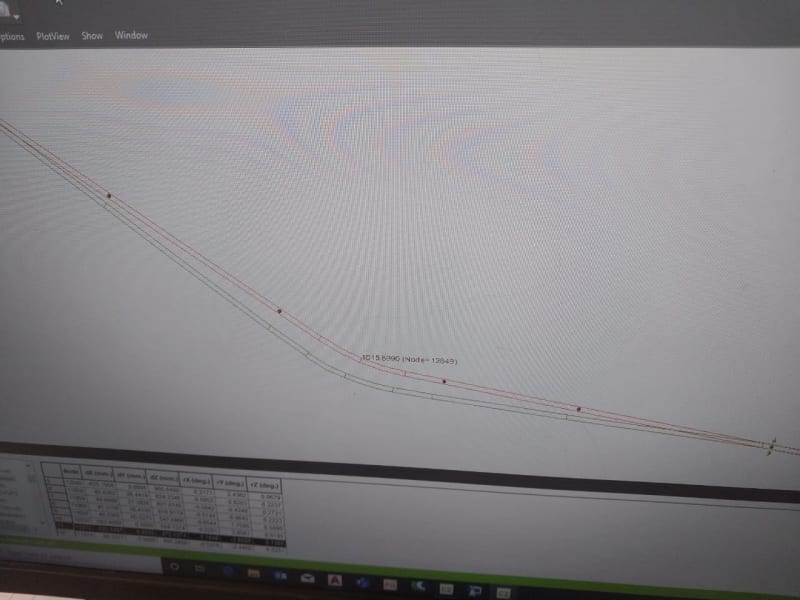mahmoud kassab
Mechanical
greetings all,
i have a pipeline 1700m size 10in and wall thickness 12.7mm its condition is laid aboveground on concrete sleepers with intervals every 15m the pressure is 82bar and temp 85c the main issue here is due to the client requirement and site issues using any loops with hot bends or even zigzag configuration with cold bend are not permitted after analyzing the pipeline it gives at the change directions bends (2 bends 21deg and 32deg) which are of cold bend type with radius 40D because also the hot bend for changing direction is not allowed, the deflection (displacement) at the bends body reached 1m laterally we tried to put anchor blocks to reduce it but it had load 150ton which is a huge load to design anchor block (4m*4m*4m) so even the anchor blocks is not a solution the question here is 1m deflection at bend body is acceptable noting that:
1- the supports are not an issue we will make it wide enough to let the pipe move freely on it
2- the max stress ratio from CAESAR analysis is safe 82% for all cases even the expansion case
3- my main fear and concern here is the strain as far as i know CAESAR is single beam theory software and doesn't commodate any effect of strain and the 1m deflection in the bend body could cause work hardening making the material to behave more brittle and fail due to crack which caeser is limited software to check such effect and need to be studied using Abaqus FEA ,is my concern valid or not and based on experience what is the value of maximum deflection allowed for the pipeline as there is no standard or company spec state such value for pipeline all have only for piping which ranges maximum from 120 to 150mm
i have a pipeline 1700m size 10in and wall thickness 12.7mm its condition is laid aboveground on concrete sleepers with intervals every 15m the pressure is 82bar and temp 85c the main issue here is due to the client requirement and site issues using any loops with hot bends or even zigzag configuration with cold bend are not permitted after analyzing the pipeline it gives at the change directions bends (2 bends 21deg and 32deg) which are of cold bend type with radius 40D because also the hot bend for changing direction is not allowed, the deflection (displacement) at the bends body reached 1m laterally we tried to put anchor blocks to reduce it but it had load 150ton which is a huge load to design anchor block (4m*4m*4m) so even the anchor blocks is not a solution the question here is 1m deflection at bend body is acceptable noting that:
1- the supports are not an issue we will make it wide enough to let the pipe move freely on it
2- the max stress ratio from CAESAR analysis is safe 82% for all cases even the expansion case
3- my main fear and concern here is the strain as far as i know CAESAR is single beam theory software and doesn't commodate any effect of strain and the 1m deflection in the bend body could cause work hardening making the material to behave more brittle and fail due to crack which caeser is limited software to check such effect and need to be studied using Abaqus FEA ,is my concern valid or not and based on experience what is the value of maximum deflection allowed for the pipeline as there is no standard or company spec state such value for pipeline all have only for piping which ranges maximum from 120 to 150mm

